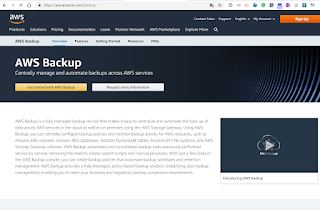QTS Realty Trust has established a Mid-Atlantic Network Access Point (NAP) within its 1.3 million square foot mega data center in Richmond, Virginia. The facility is the closest Tier 3 designed data center to the MAREA and BRUSA next-generation subsea cables, significantly closer to the subsea cables than other data centers and network exchange points in Ashburn, Va.
QTS' Richmond data center features diverse connectivity for cloud and hybrid colocation including carrier-neutral cloud interconnection (Megaport and PacketFabric), in-building access to 17 on-net carriers, multiple fiber routes, third party neutral internet peering exchanges and direct access to leading cloud ecosystems. QTS' existing facility in Richmond features more than 500,000 square feet of raised floor capacity with a future path to more than one million square feet of raised floor capacity across a 220-acre campus.
QTS said its Mid-Atlantic Network Access Point will offer the highest on-net capacity and lowest latency connectivity for network traffic between the US and Southern Europe and the highest capacity to Latin and South America.
"With the establishment of the Mid-Atlantic NAP of Virginia featuring Telxius, QTS has effectively removed the requirement for customers with international networking needs to colocate in or connect through Ashburn unless they absolutely have to," said Sean Baillie, EVP Marketing, QTS. "By eliminating unnecessary network components, QTS' Richmond data center is now the fastest, lowest latency network distribution center in Virginia to and from three continents."
MAREA is a Telxius joint project with Facebook and Microsoft. It has reached 200 terabits per second (Tbps) of capacity, connecting Virginia and Sopelana (Spain).
BRUSA is a private cable built by Telxius and offers one of the lowest latency communication links between the U.S., Puerto Rico and Brazil.
"Telxius is highly focused on delivering the lowest latency connectivity solutions to enterprises globally," said Enrique Valdés, VP of Sales, North Region, Telxius. "We are pleased to join the Mid-Atlantic NAP of Virginia as the ideal exchange for any institution looking to colocate in North America and serve international customers with the lowest latency across the BRUSA and MAREA cables."

QTS' Richmond data center features diverse connectivity for cloud and hybrid colocation including carrier-neutral cloud interconnection (Megaport and PacketFabric), in-building access to 17 on-net carriers, multiple fiber routes, third party neutral internet peering exchanges and direct access to leading cloud ecosystems. QTS' existing facility in Richmond features more than 500,000 square feet of raised floor capacity with a future path to more than one million square feet of raised floor capacity across a 220-acre campus.
QTS said its Mid-Atlantic Network Access Point will offer the highest on-net capacity and lowest latency connectivity for network traffic between the US and Southern Europe and the highest capacity to Latin and South America.
"With the establishment of the Mid-Atlantic NAP of Virginia featuring Telxius, QTS has effectively removed the requirement for customers with international networking needs to colocate in or connect through Ashburn unless they absolutely have to," said Sean Baillie, EVP Marketing, QTS. "By eliminating unnecessary network components, QTS' Richmond data center is now the fastest, lowest latency network distribution center in Virginia to and from three continents."
MAREA is a Telxius joint project with Facebook and Microsoft. It has reached 200 terabits per second (Tbps) of capacity, connecting Virginia and Sopelana (Spain).
BRUSA is a private cable built by Telxius and offers one of the lowest latency communication links between the U.S., Puerto Rico and Brazil.
"Telxius is highly focused on delivering the lowest latency connectivity solutions to enterprises globally," said Enrique Valdés, VP of Sales, North Region, Telxius. "We are pleased to join the Mid-Atlantic NAP of Virginia as the ideal exchange for any institution looking to colocate in North America and serve international customers with the lowest latency across the BRUSA and MAREA cables."
MAREA redefines the transAtlantic subsea bandwidth equation

Construction of the highest-capacity subsea cable to cross the Atlantic is now complete.
The 6,600 km MAREA subsea cable, which was jointly funded by Microsoft and Facebook, links Virginia Beach, Virginia to Bilbao, Spain. The cable will be managed by Telxius, Telefónica’s new infrastructure company. The cable features eight fiber pairs and an initial estimated design capacity of 160 Tbps.
The cable takes a more southern route than other transatlantic cables, which mostly connect northern Europe to the New York/New Jersey region.
The 6,600 km MAREA subsea cable, which was jointly funded by Microsoft and Facebook, links Virginia Beach, Virginia to Bilbao, Spain. The cable will be managed by Telxius, Telefónica’s new infrastructure company. The cable features eight fiber pairs and an initial estimated design capacity of 160 Tbps.
The cable takes a more southern route than other transatlantic cables, which mostly connect northern Europe to the New York/New Jersey region.
- TE SubCom served as the system supply partner for MAREA.
- BRUSA is Telxius’ new submarine cable linking Rio de Janeiro and Fortaleza (Brazil) with San Juan (Puerto Rico) and Virginia Beach (USA). The 11,000-km cable consists of 8 fibre pairs, with 135 x 100 Gbps per fibre pair, with 4 direct fiber pairs connecting US-Brazil, and 4 fibre pairs entering Puerto Rico and Fortaleza. Alcatel Submarine Networks is the lead supplier.


























